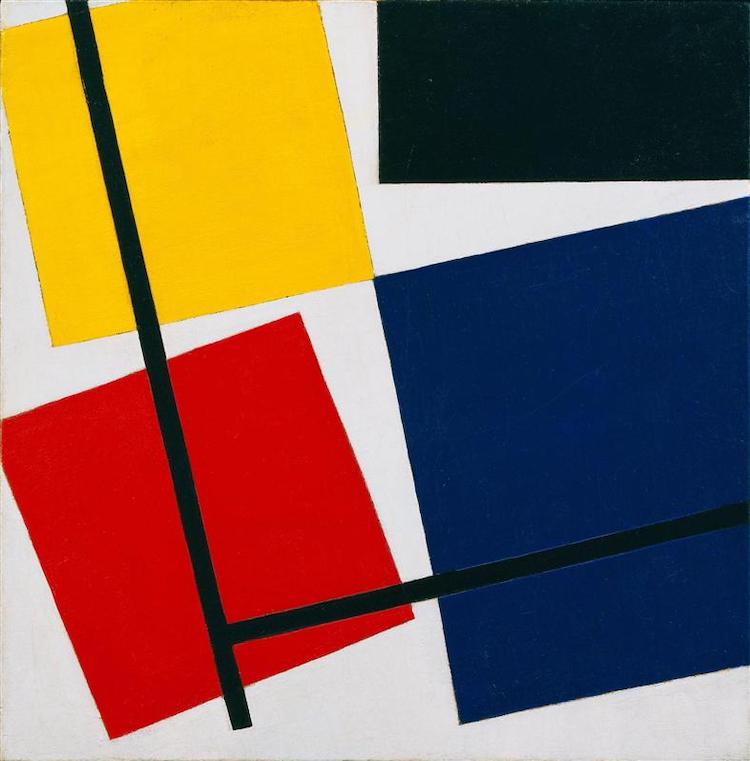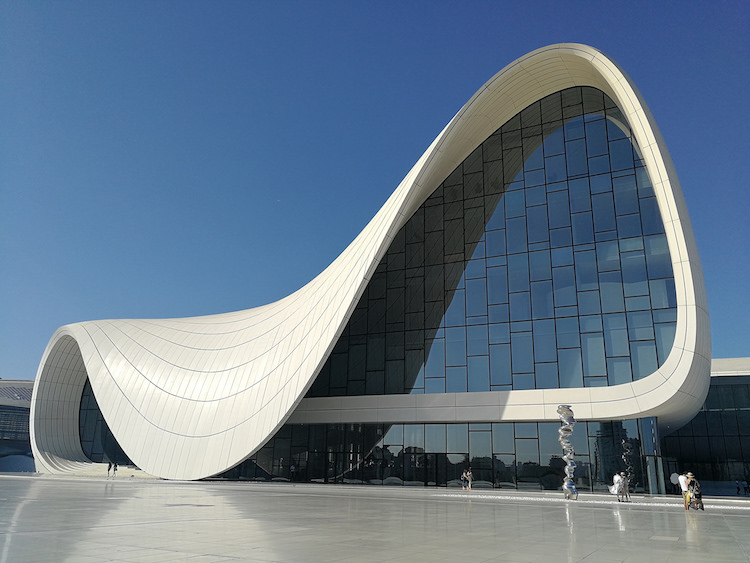
The 7 elements of art that shape creativity 2
Figure
Product of closed lines, the figures are two-dimensional, flat and only have height and width. Geometric figures, such as circles and squares, are mathematical and precise, while organic figures are inspired by nature and tend to be curved and abstract. Henri Matisse's collages make great use of organic figures, while Piet Mondrian is known for his masterful use of geometric figures in his paintings. Shapes can be used to control how we perceive a composition. For example, triangles can help draw the eye to a specific point, while circles represent continuity.

Shape
When a figure takes depth and becomes three-dimensional, then it takes shape. Cylinders, pyramids and spheres are some of the most common shapes, although they can also be amorphous. In sculpture, form is most important, although it can easily be introduced into drawing and painting using 3D art techniques. The baroque sculptor Bernini was a master of the form, carving his sculptures so that they could be enjoyed from any perspective. Form is also an important element in architecture: many acclaimed architects such as Frank Lloyd-Wright, Zaha Hadid and Tadao Ando take this element into their designs.

Worth
Related to color, value is the lightness and darkness of a color. The lightest value is white and the darkest is black, and the difference between them is defined as contrast. Playing with value can not only change certain forms, but also influence the character of the work. Value is so important that the Italians created a term—chiaroscuro—which refers specifically to the use of light and shadow in a work of art. The Baroque painter Caravaggio was a master in the use of chiaroscuro in his oil paintings. Photographer Ansel Adams is another artist who expertly used value to create interesting compositions in his landscape photographs.

This element of art can be manipulated based on how the artist places lines, shapes, shapes, and color. The placement of these other elements creates the space. Space can be positive or negative. Positive space is an area occupied by an object or shape, while negative space is an area that extends between, through, around, or within objects. Artists often think about the foreground, background, and background of their artwork, purposely placing shapes and lines throughout the space to achieve the perfect composition. The sense of depth in two-dimensional works is often achieved through perspective, which in turn can be based on lines or colors.
Texture
Texture is an element of art that also plays with our sense of touch. It is defined as a description of the way something feels or could feel. Sometimes it is a real texture that you can feel, as in the case of Icelandic artist Hrafnhildur Arnardóttir, who creates art installations with synthetic hair. Other times, the texture is an implied visual texture that is two-dimensional. Soft, rough, hard, squishy, hairy, spongy, and wrinkled are some of the different textures that evoke different responses.
space
For example, an artist looking for a hyper-realistic result will want her clouds to look fluffy, while another who wants to subvert conventions might play with texture to create a surreal experience for the viewer. The 19th-century sculptor Antonio Canova was a master in this regard, as demonstrated by his portrait of Napoleon's sister: the woman rests on a cushion that appears so soft that it is difficult to believe it is made of marble.



- April 16, 2025
Honduran Artist's Exhibition Attracts Art

- April 16, 2025
Festivals Celebrating Latin Music



- April 16, 2025
Gallery Of Humor Drawing By Yassin Alkhalil - Syria

- April 16, 2025
Gallery Of Illustration By Chris Madden - USA

- April 16, 2025
Gallery Of Illustration By Rancesco Chiappara - Italy

- April 16, 2025
Famous 20th-Century Painters and Their …

- April 14, 2025
Analysis of Artistic Works Created with…

- April 13, 2025
From Digital Art to Contemporary Art

- April 13, 2025
The Expansion of Photography

- April 12, 2025
When is photography considered art?

- April 10, 2025
Impact of AI on the Diversity of Artist…

- April 10, 2025
How can AI enhance artistic creativity?

- April 09, 2025
The Impact of Artificial Intelligence o…

- April 08, 2025
Latin American art, a goldmine of oppor…

- April 07, 2025
Contemporary Art in Brazil: Between the…

- April 07, 2025
Mexican Muralism: Art for the People

- April 06, 2025
History of graphic art in Brazil

- April 05, 2025
Modern Art: A Renaissance in Art History

- April 02, 2025
Aldo Estrada (Ilustronauta): From Peruv…

- March 31, 2025
How ChatGPT is Turning Photos into Japa…

- March 30, 2025
Arístides Hernández (ARES): A Sharp Min…

- March 30, 2025
The Masters of Cuban Caricature: Celebr…

- March 29, 2025
Where Will Artificial Intelligence Take…

- March 27, 2025
A Few Fascinating Features of Latin Ame…

- March 27, 2025
9 Key Books to Understand Latin America…

- August 29, 2023
The history of Bolivian art

- February 19, 2024
Analysis and meaning of Van Gogh's Star…

- January 28, 2024
Culture and Art in Argentina

- September 25, 2023
What is the importance of art in human …

- September 23, 2023
What is paint?

- August 10, 2023
14 questions and answers about the art …

- August 30, 2023
First artistic manifestations

- August 23, 2023
The 11 types of art and their meanings

- March 26, 2024
The importance of technology in art1

- August 16, 2023
The 15 greatest painters in art history

- April 06, 2024
History of visual arts in Ecuador

- September 23, 2023
History of painting

- January 31, 2024
Examples of Street Art – Urban Art

- January 20, 2024
What is the relationship between art an…

- March 26, 2024
Cultural identity and its impact on art…

- April 07, 2024
Graffiti in Latin American culture

- October 21, 2023
Contemporary art after the Second World…

- September 23, 2023
Painting characteristics

- August 25, 2024
A Comprehensive Analysis of the Cartoon…

- September 09, 2024
Origin of modernism and historical cont…

- February 19, 2024
Analysis and meaning of Van Gogh's Star…

- August 13, 2023
9 Latino painters and their great contr…

- August 29, 2023
The history of Bolivian art

- August 10, 2023
14 questions and answers about the art …

- January 28, 2024
Culture and Art in Argentina

- August 23, 2023
The 11 types of art and their meanings

- November 06, 2023
5 Latin American artists and their works

- September 23, 2023
Painting characteristics

- August 27, 2023
15 main works of Van Gogh

- September 23, 2023
What is paint?

- September 25, 2023
What is the importance of art in human …

- August 30, 2023
First artistic manifestations

- January 20, 2024
What is the relationship between art an…

- December 18, 2023
10 iconic works by Oscar Niemeyer, geni…

- January 12, 2024
10 most beautiful statues and sculpture…

- October 30, 2023
Characteristics of Contemporary Art

- March 26, 2024
Cultural identity and its impact on art…

- August 22, 2023
What are Plastic Arts?

- April 16, 2024
The most important painters of Latin Am…

- October 11, 2023


